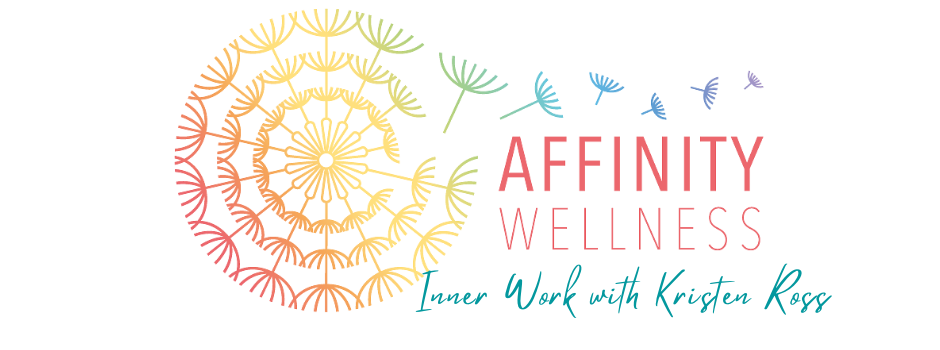Kinesiology, A holistic approach to your health using Vibrational Medicine
Kinesiology (pronounced kin-easy-ology) therapy is often confused with biomechanics, the study of movement. Kinesiology therapy whilst incredibly effective in working with movement issues is a holistic natural therapy which allows the therapist to communicate with the body’s innate intelligence through the use of gentle muscle monitoring techniques to determine and remove underlying stresses within the body’s different systems. As a holistic complementary therapy, it is used to treat a wide range of stress associated ailments on different levels using a vibrational model of health.
Vibrational medicine (also known as Energy medicine) is becoming the health care treatment of the new age. Scientists are helping to bridge the gap between western medicine and complementary therapies. This will help us understand the differences between the two. This should allow health care professionals to work with both to create holistic healthcare treatment for their clients. That is health care that addresses body, mind and spirit.
What is Vibrational Medicine?
The Vibrational model.
Our cells and organs are supported by a variety of specialised energy-distributing systems fed by nutrients and oxygen as well as a stream of life-force energy. This has long been acknowledged in eastern healing, known as either qi or prana. This energy can be enhanced or inhibited by various factors. In vibrational medicine, some of the acknowledged factors responsible for life-force energy flow are such things as our emotions, our behaviours, the way we relate to others and our conscious awareness. Our emotions in this model relate not just to neuro-chemical reactions in the limbic system of the brain but are also influenced by a greater spiritual energy field. Our reactions to life’s events are not just recorded in our memory but they also affect the seven major life energy centres of the body (chakras) and are responsible for our behavioural patterns, attitudes, thoughts and beliefs as well as physiological problems associated with the nervous system which sends messages through the body via electrical signals.
Another aspect of the vibrational model of healing is the acknowledgement of the importance that spiritual energy plays. Spirit can be seen as a motivating force that animates the physical body. At the time of death, it is said that our spirit moves on leaving behind the body. It is the physical body that allows the spirit inhabiting it to interact with other individuals, have meaningful relationships, learn and create. It is these experiences and the direct effect they have on your physiology via their effect on life-force energy that is the main focus of vibrational healing. The two major energy systems worked with are the meridian system and the chakra system.
The History of Modern Kinesiology
Kinesiology began in the US in the work of 1930′s ‘human movement’. Chiropractors soon found the muscle monitoring techniques useful and began to apply them when working on muscle function with their patients. In the early 1960′s, a Detroit chiropractor Dr George Goodheart found that muscle monitoring could also access the functional status of other physiological systems.
Muscle monitoring, as used in Kinesiology today, is the art of placing specific muscles into their most contracted position where the neurological integrity (not the strength) of that muscle can be monitored by asserting a certain amount of pressure upon the limb.
Dr Goodheart found that muscles which could not hold their position i.e. maintain position against slight pressure could be “tonified”, by stimulating certain reflex points on the body. Through much research and observation, a comprehensive system of muscle monitoring and muscle corrections was put together. These correction procedures included Chapman’s Neurolymphatic Reflex points (for lymphatic function), Bennett’s Neurovascular Reflex points (for vascular function) and Spinal Reflex technique (for nervous system function). Goodhearts’ research also explored the subtle energy pathways described in Chinese medical literature and he found that meridian stimulation could also tonify a previously “weak” muscle. Goodheart collated this information together in a form which is now universally accepted as “Kinesiology”.
Kinesiology treatment and the vibrational model
Today Kinesiologists incorporate a variety of vibrational healing techniques to treat imbalances in the body’s many systems. It is a foundational understanding in kinesiology that each muscle in the body is directly connected to one of the 14 main Chinese medicine meridians. A kinesiology therapist is able to determine where stress lies within the body’s vibrational system (i.e. the meridian, chakra or auric field) in various ways. They can either test various muscles the obtain information about which meridians are under/over energized. They can also work by setting up an ‘indicator muscle’ and test for a yes/no response when asking questions about where stress lies in various systems. They do this by working with certain acupoints and areas of the body and/or by introducing stressful substances into the body’s energetic field.
As a holistic therapy kinesiology treatment can be effective on many levels, the main aim of the treatment is to remove stress which can be experienced in many forms. Stress, for example, can be experienced biochemically when we come into contact with toxic chemicals or emotionally when we are involved in an argument or unpleasant situation. Stress can also be good or bad, the difference between the two depends on the outcome for the person experiencing it. For an unfit person it may be stressful to induce exercise however, the outcome will be that they feel stronger and happier in the long term, this is good stress. Bad stress ultimately leads to ‘distress’ in the form of illness and emotional issues. Following is a brief breakdown of how kinesiology works to reduce stress on different levels.
Physically, kinesiology can be used to show us where imbalances lie in the muscle and joint mechanics. Often, pain and postural misalignment is caused by tightening of particular muscles whilst their opposing/antagonist muscles become elongated and weakened. Muscle monitoring techniques show the therapist which muscles are out of balance and allows the therapist to perform body-work or prescribe stretches or corrective exercise to re-strengthen and/or stretch the affected muscles.
Biochemically, kinesiology is often used to test allergies, sensitivities and intolerances to foods and other chemical substances. It can also be used to determine possible hormonal imbalances and blood chemistry imbalances as well as nutritional deficiencies when used with the appropriate knowledge of nutritional medicine.
Psychologically, kinesiology can help a person to clear limiting belief systems, change patterns of behaviour and uplift low moods by investigating what beliefs a person holds onto, how those beliefs make them act in a particular way and where they originated from. Through the use of affirmations, emotional stress relief techniques and holistic counselling, the body is able to be ‘re-programmed’ and old beliefs replaced with new ones.
Energetically, kinesiology can determine where there are imbalances in the vibrational system, incorporating the acupoint, meridian, chakra and auric systems. Kinesiologists can then utilize vibrational treatments to realign the body’s energetic system. Treatments given may include flower essences, homoeopathy, sound vibration, light frequency, hands on healing, acupressure etc. Treatment often depends on the practitioner’s range of knowledge, experience and skill set.
The Meridian system
Western medicine has only recently started to acknowledge the existence of the meridian system. However, Eastern medicine has been using the system for health and healing for thousands of years. The meridian system is a network of channels throughout the body through which qi flows, punctuated by various points known as acupoints. In Chinese medicine terms, illness is a direct cause of an imbalance in the flow of qi. Acupuncture or acupressure treatments are a way of rebalancing this energy flow by stimulating the particular areas in which energy becomes blocked. Research into the inner traditions of Chinese medicine shows that each meridian and acupoint resonates with specific emotional and spiritual information and values, and it is thought that acupoint/meridian qi blockages are a result of our reactions to experiences, attitudes and emotions. Therefore, treatment of these points allows the smooth movement of qi as well as benefitting the patient from an emotional perspective … read more here.
The Chakra system
Seven major energy centres exist within the body as well as a number of minor energy centres. These energy centres are commonly known as chakras. The chakras are said to relate to our spiritual energy and each contains a universal spiritual life lesson that we must learn from in order to evolve to a higher conscious awareness. Ignoring our responsibility to address these seven major life lessons will ultimately lead to illness as the body creates messages to bring your attention to areas of your life in which change or progress needs to occur. Each of the seven major chakras is said to be directly connected to the endocrine and nervous system … read more here.
The Mind-Body connection
The key point to remember in regards to vibrational medicine is the focus on spirituality, emotions, attitudes, behaviours and beliefs. Often within a kinesiology session, you may find that you uncover links between the different levels mentioned above. For example, the physical issue you intended to address has related causes that are psychological and treatment may be given primarily to address issues on that level. Treatments given and information gathered during the session can range from the physical to the esoteric. This is because kinesiology is an integrative therapy; it is a tool that helps us establish the link between the mind and the body. It serves to show you how your beliefs affect your body and your behaviours and vice versa. Kinesiology can help you to establish new beliefs and behaviours and ultimately allow the body’s innate healing systems to work to remove distress from your body. Your Kinesiologist acts as the facilitator for your healing by drawing conscious awareness to where stress occurs and what it is related to, the ultimate outcome being that your body is encouraged to heal and balance itself. Kinesiology treatment aims to make you aware and take control of your health.
What makes Kinesiology treatment so effective is that it is always specific to the individual being treated. It focuses on your body’s innate ability to heal itself and uncovers the underlying conditions and stressors that may be preventing you from achieving your health potential. Kinesiology is a truly holistic approach to help you clear limiting beliefs, perform successfully, heal yourself and maintain your wellbeing.
Recommended Reading:

See more @ Book Depository
Kristen Ross founded Affinity Wellness in 2007 and since has helped hundreds of clients to unlock their Inner Guidance, Unleash their potential and create lives they love.
With a history in the management of artists. Kristen had the opportunity to help guide the careers of many professional actors and artists, helping others thrive personally and professionally by connecting to their intuition and inner compass, this led her to study healing modalities such as kinesiology and counselling to enhance her work as a soul empowerment guide.
Kristen combines a striking combination of energy healing (kinesiology), counselling, coaching, dreamwork, meditation and yogic medicine practices to tap into the many facets of the self, mind, body and soul and release the layers that block her clients from accessing their intuition and self-love.
She believes that your life is your spiritual practice and that every decision you make is a part of your journey towards peace, power and enlightenment.
Everything you create and achieve comes from your ability to love and accept yourself and to do that you must engage in inner work.
Kristen currently runs a private online practice servicing individuals across Australia, New Zealand and the UK based in Melbourne, Australia.





